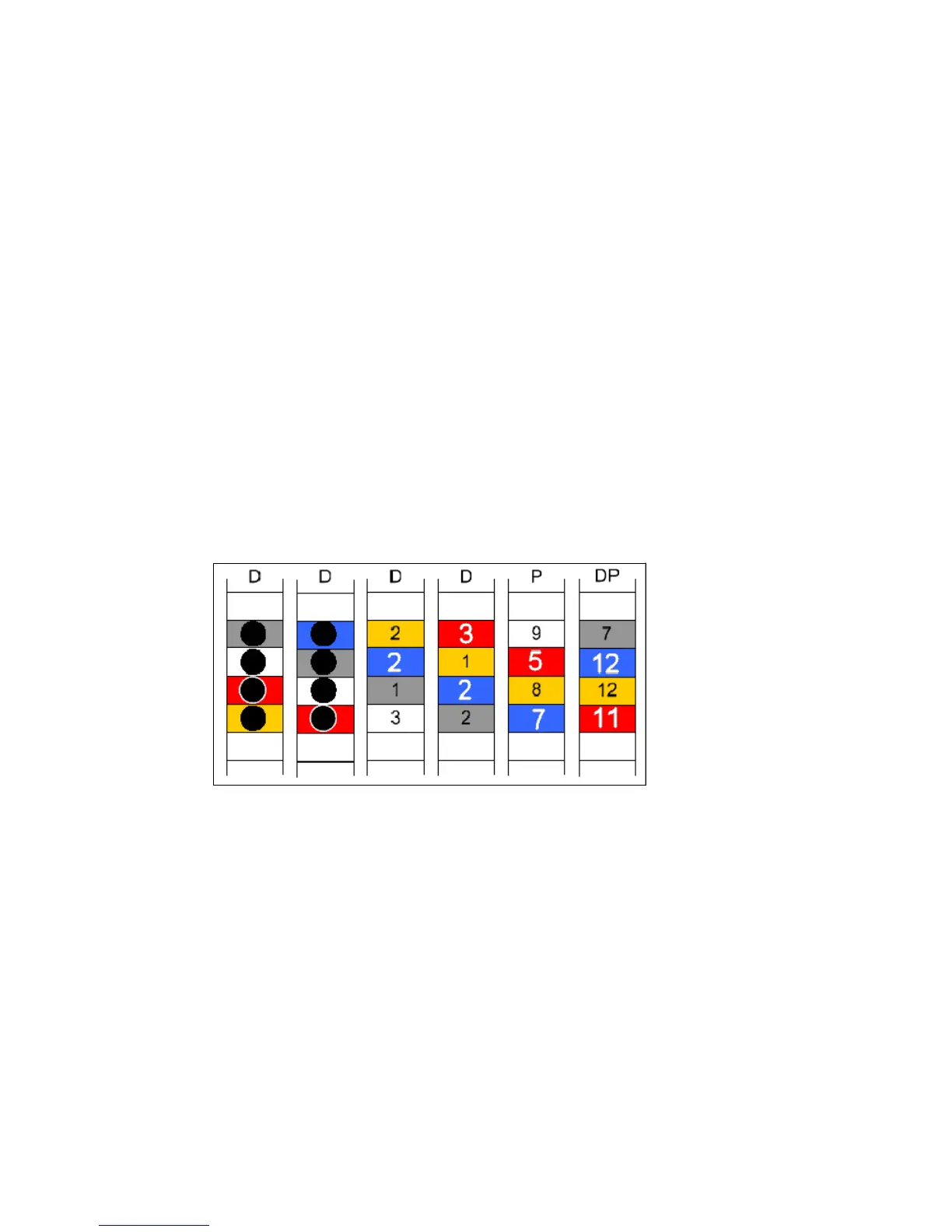Chapter 10. Data protection with RAID Double Parity 155
Omitting the one diagonal stripe does not affect RAID-DP’s ability to recover all data in a
double-disk failure as shown in the reconstruction example.
The same RAID-DP diagonal parity conditions that are described n this example are true in
real storage deployments. It works even in deployments that involve dozens of disks in a
RAID group and millions of rows of data that is written horizontally across the RAID 4 group.
Recovery of larger-size RAID groups works the same, regardless of the number of disks in
the RAID group.
Based on proven mathematical theorems, RAID-DP provides the ability to recover all data in
the even of a double-disk failure. For more information, see the following resources:
For more information about using mathematical theorems and proofs, see Double Disk
Failure Correction, which is available at the following USENIX Organization website:
http://www.usenix.org
Review the double-disk failure and subsequent recovery process that is described in
10.4.4, “RAID-DP reconstruction” on page 155.
10.4.4 RAID-DP reconstruction
By using Figure 10-9 as the starting point, assume that the RAID group is functioning
normally when a double-disk failure occurs. The failure is shown by all data in the first two
columns being missing in Figure 10-10.
Figure 10-10 RAID-DP simulation of double disk failure
When engaged after a double-disk failure, RAID-DP first begins looking for a chain with which
to begin reconstruction. In this case, the first diagonal parity stripe in the chain that it finds is
represented by the blue series of diagonal blocks. Remember that when reconstructing data
for a single disk failure under RAID 4, no more than one element can be missing or failed. If
another element is missing, data loss is inevitable.

